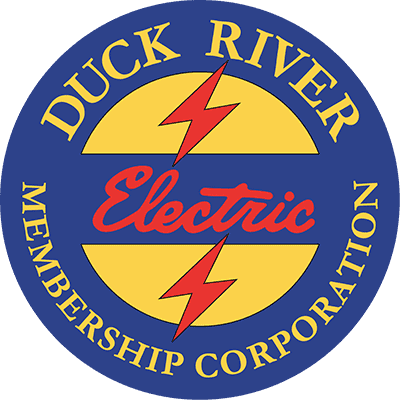27 Feb DREMC awarded $2.14M from ARC’s POWER grant
DREMC receives largest POWER grant for the current funding cycle of 33 awards in 9 states supporting projects ranging from recovery-to-work programs, broadband development and workforce training
Today, Duck River Electric Membership Corporation (DREMC) announced their receipt of a grant award totaling over $2.14 million from the Appalachian Regional Commission (ARC) for DREMC’s east fiber loop and smart grid fiber communication project. The project will deploy smart grid improvements that in turn can be used to form the backbone of a gigabit-speed fiber broadband network.
“This project will help enable our Internet service provider (ISP) partners to provide affordable broadband access to 1,202 businesses and 2,876 households in Franklin, Coffee and Marion Counites, three DREMCserved counties that are also in the ARC footprint,” reported DREMC Key Accounts Coordinator Teresa Sampson. “While DREMC does not have plans currently to become an ISP, we do want to be part of the solution in helping get high-speed broadband access to our service area.”
Last week the ARC announced $22.8 million to expand and diversify the economy in Appalachia’s coal-impacted communities through the POWER (Partnerships for Opportunity and Workforce and Economic Revitalization) Initiative. These 33 awards are projected to create or retain nearly 1,000 jobs, benefit over 3,300 students and workers, and leverage more than $21.8 million in private investment into manufacturing, agriculture, technology, substance abuse recovery, broadband development, and other industry sectors across coal-impacted communities in nine Appalachian states.
DREMC’s Sampson was the primary author of the ARC grant application after the cooperative took the initiative to seek input from residential, commercial and industrial members to gauge interest and need as it relates to broadband service.
“Since a large part of DREMC’s service area is in very rural areas, there is a critical need for broadband to be made available to our members,” added Sampson. “We get it; economic development is a key part of our mission as an electric cooperative, and broadband access has become fundamental in our modern day.”
DREMC’s entire fiber backbone project consists of multiple phases; yet the two phases that impact the Coffee, Franklin and Marion county areas include over 130 miles of fiber connecting DREMC substations, a communications tower, multiple SCADA devices and meet points with other potential fiber partners.
“We plan to lease fiber to ISP partners, who are experienced in providing retail Internet service,” said Sampson. “Our ISP partners can, in turn, take the broadband Internet access all the way to homes, businesses and education facilities in the area. DREMC is a catalyst for helping make this venture work, but we’re a poles and wires company; ISPs are the real experts when it comes to end-user, high-speed Internet access.”
Sampson further explained that Coffee, Franklin and Marion counties have been adversely impacted due to the closure of coal-power electric plants in northern Alabama and throughout Georgia. Franklin County’s two limestone mines, Sherwood Mining and L’Hoist North America, have been significantly impacted by the closure and/or natural gas conversion of coal fueled power plants causing them to significantly reduce their workforce. The proposed broadband expansion into these counties will allow these workers and other coal-impacted workers to further their education, work skills and access employment opportunities.
“Our announcement continues an ongoing commitment for innovative economic development in Appalachia’s coal-impacted communities,” said ARC Federal Co-Chair Tim Thomas. “Investing in key regional needs now— like comprehensive substance abuse recovery strategies, broadband development, and skilled workforce training—will benefit Appalachia, and the rest of the country, well into the future.”
Sampson added that the entire DREMC fiber backbone project, a 350-mile loop of their service area, is a $15 million investment by the electric cooperative that will take over three years to complete.
“This project is a major undertaking, but one we are willing to make,” commented Sampson. “We appreciate ARC for helping make this a reality for our communities. This grant of $2.14 million makes our initiative that much stronger of a benefit to our members.”
POWER (Partnerships for Opportunity and Workforce and Economic Revitalization) is a congressionally funded initiative that targets federal resources to help communities and regions that have been affected by job losses in coal mining, coal power plant operations, and coal-related supply chain industries due to the changing economics of America’s energy production. With today’s announcement, ARC has invested over $144.8 million in 182 projects touching 312 counties across Appalachia since 2015. ARC is working with Chamberlin/Dunn LLC, a third-party research firm, to monitor, analyze, and evaluate these investments.
ARC’s POWER investments continue economic growth in coal-mining counties and in communities along the Region’s coal supply chain. Counties in Tennessee include Anderson, Bledsoe, Campbell, Cannon, Carter, Claiborne, Cocke, Coffee, Cumberland, DeKalb, Fentress, Franklin, Grainger, Greene, Grundy, Hamblen, Hamilton, Hancock, Hawkins, Jackson, Johnson, Knox, Lawrence, Lewis, Loudon, Macon, Marion, McMinn, Monroe, Morgan, Overton, Pickett, Rhea, Roane, Scott, Sequatchie, Smith, Sullivan, Unicoi, Union, Van Buren, Warren, and Washington, and White.
The Appalachian Regional Commission is an economic development agency of the federal government and 13 state governments focusing on 420 counties across the Appalachian Region. ARC’s mission is to innovate, partner, and invest to build community capacity and strengthen economic growth in Appalachia to help the Region achieve socioeconomic parity with the nation.

